When it comes to fish, there is no shortage of knowledge out there.
With every species, different care requirements exist with certain elements and conditions, while other species have specific behavioral quirks.
The Cuban Cichlid is no exception and requires dedication to give them the best role in your aquarium.
The Cuban Cichlid (Scientific family name Nandopsis tetracanthus) is known for its color, sparkling personality, and history.
They were initially introduced to the aquarium trade in the 1960s and were considered a great addition to the community aquarium.
However, they have since been labeled as non-community fish due to their highly aggressive nature and tank requirements. This is unfortunate because they are beautiful fish that are extremely fun to keep and breed.
The Cuban Cichlid is a popular and beautiful freshwater fish that typically grows to approximately 8.2 inches but can grow as large as 10 inches in some cases. The fish is considered aggressive and territorial, so keeping only one specimen in an aquarium is inadvisable unless you have a significant amount of space.
They can be housed in fish-only setups, tanks containing other South American cichlids, or larger fish such as African Cichlids, Oscars, Guppies, Tetras, etc.
Some aquarists mistake them for Jaguar Cichlids, but the Cuban Cichlid is not the same as a Jaguar Cichlid.
They are typically larger-bodied fish that are highly active and playful. They are known for their silver/black coloration and vibrant colored fins that often reach over the body.
They are carnivores and will accept all foods. They are also known for their ability to jump out of the water, so you should take precautions to prevent this from happening.
In their natural habitat, they are found in freshwater lakes and rivers. In the wild, they are relatively active swimmers that spend most of their day swimming around and looking for food.
Overview
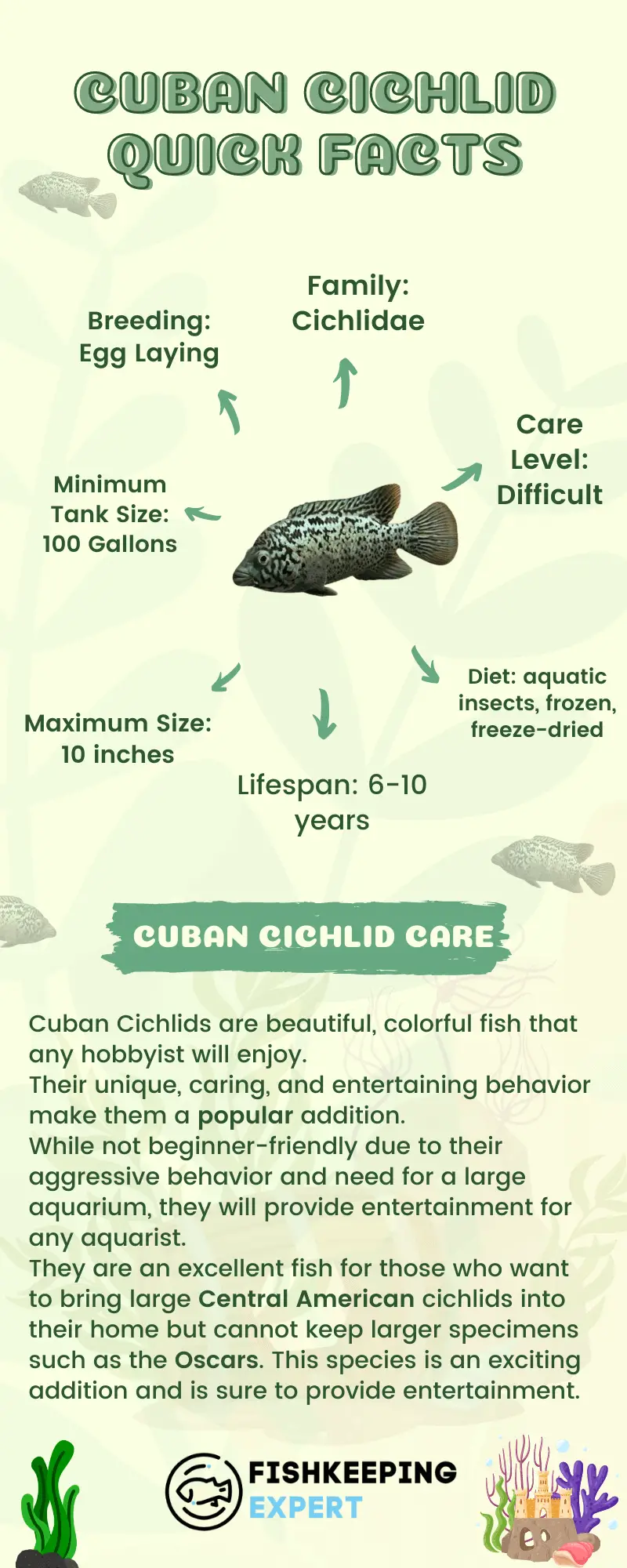
Size & Lifespan:
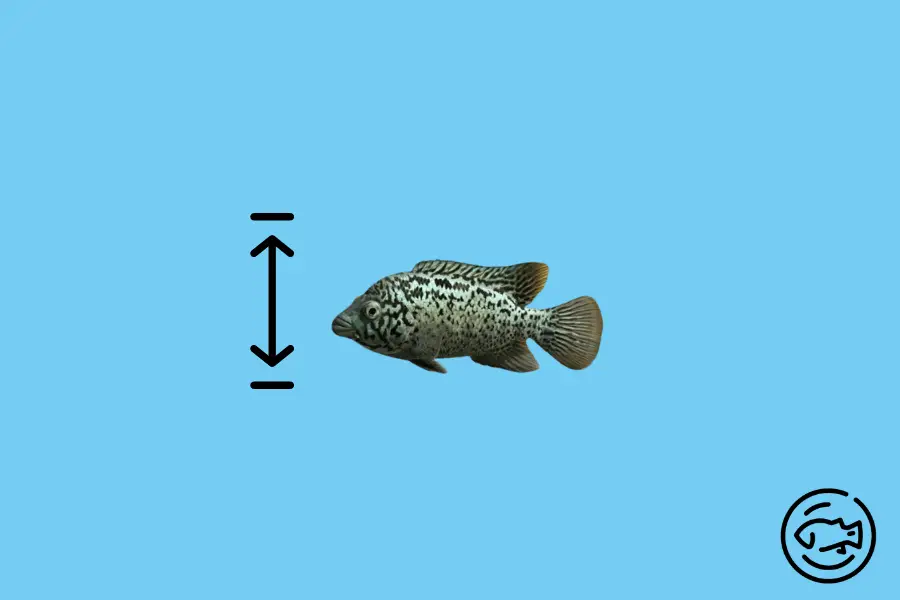
As mentioned earlier, the Cuban Cichlid can grow to a maximum length of 10 inches, but this is relatively uncommon.
The typical max size will fall between 6-8.2 inches, with the most common size being 7-8 inches. They are long-lived fish that can live up to 6-10 years of age with proper care and diet. The diet greatly affects this longevity, so feeding your high-quality fish food and copious amounts of Vitamin C is recommended.
Females are generally larger and heavier than males, with some males growing to over 1 pound while others are under a pound. The male is known to have more intense coloration and more prominent, more colorful fins.
Tank Requirements:
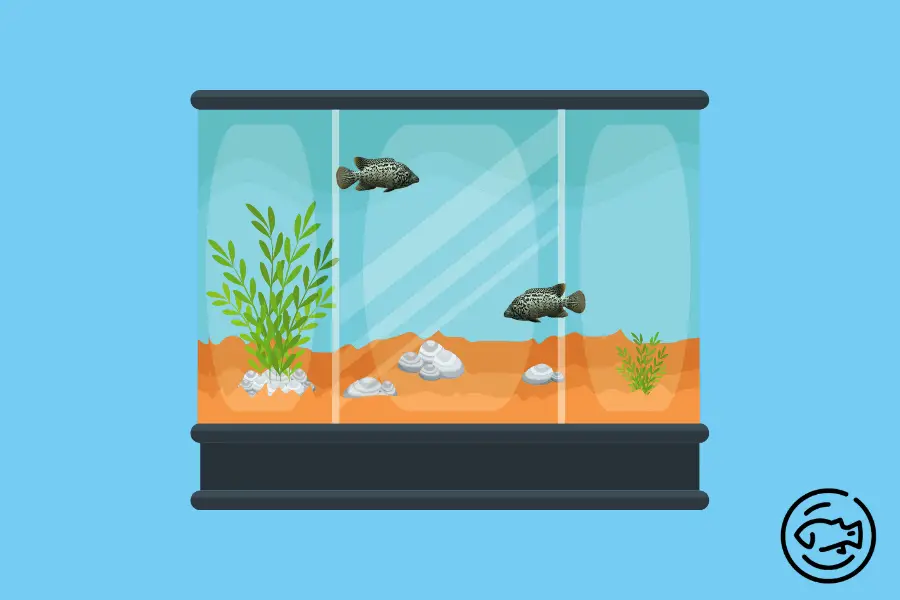
They require plenty of space to thrive and grow properly.
A larger tank is suggested for housing a single specimen; 100 gallons minimum would be preferable.
A larger tank is needed if you want a pair or trio as they are known for being very territorial, so it is best to spread them out in large tanks, as they will display their best colors and live their happiest lives when there is ample space.
Tanks with driftwood and rocks make for an ideal habitat for the Cuban Cichlid.
Also read: Betta Mahachaiensis – Care, Habitat, Appearance & More!
Water Conditions

Water temperature:
The fish should have a water temperature between 72-82° Fahrenheit. The fish will tolerate higher temperatures, but you may encounter stress (pale or loss of color) if this is the case.
pH 6.0 – 8.0:
They require water with a pH between 6.5 and 7.5, although they can survive in a pH range from 6-8. It is advised to conduct a water change of 5-10% every two weeks.
It would be best if you used filters with the Cuban Cichlid as they are surface-dwelling fish, so regular maintenance is recommended.
Water Hardness:
They prefer soft water with a hardness level of 10-15° dH.
If your aquarium’s water is too hard or too soft, the fish will show signs of stress and may not live as long. The pH and hardness levels can be adjusted to meet their required conditions in the aquarium.
Compatibility
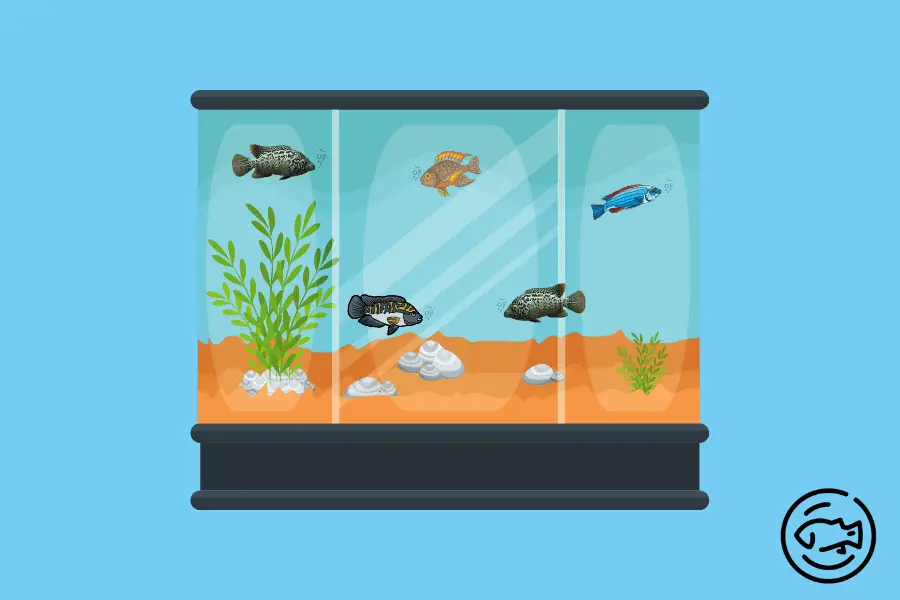
The Cuban Cichlid is a very aggressive fish and intolerant of tank mates. It is adequate to hold only one specimen in an aquarium, although there have been instances where multiple specimens have lived together in the same species tank. The only tank mates that are tolerated within their environment are similarly sized Central or South American cichlids, namely:
- Pachysoma (Dwarf Cichlid)
- green texas cichlid
- yellow jacket cichlid
- Jack Dempsey cichlid
Ensure that the new tank mates are from the same water conditions and temperature ranges to minimize stress on the Cuban Cichlid. The tank mates must also be relatively aggressive and somewhat territorial to balance their temperament.
Diet
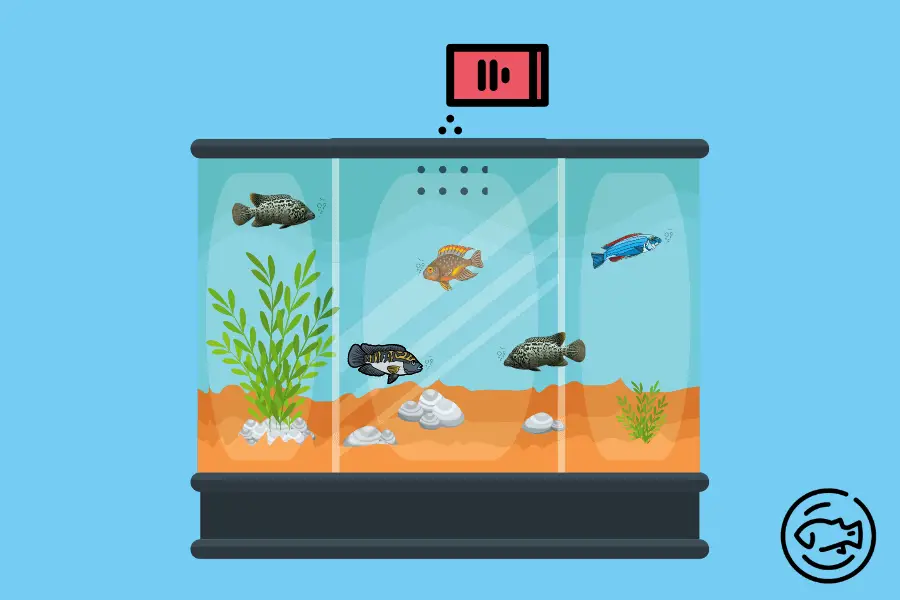
Cuban Cichlids are predatory fish and can be fed various foods, and they should be fed a diet higher in protein than most other cichlids (40-50%).
This can include live foods, aquatic insects, frozen, freeze-dried, or you can give your cichlid pellets.
They tend to feed at the bottom of the tank, so only sinking food is required. Aquarium worms and shrimp are also highly recommended.
If you plan on having aggressive or other tank mates, ensure they can eat the same foods as your Cuban Cichlid. The fish should be fed at least 2-3 times a day.
Housing
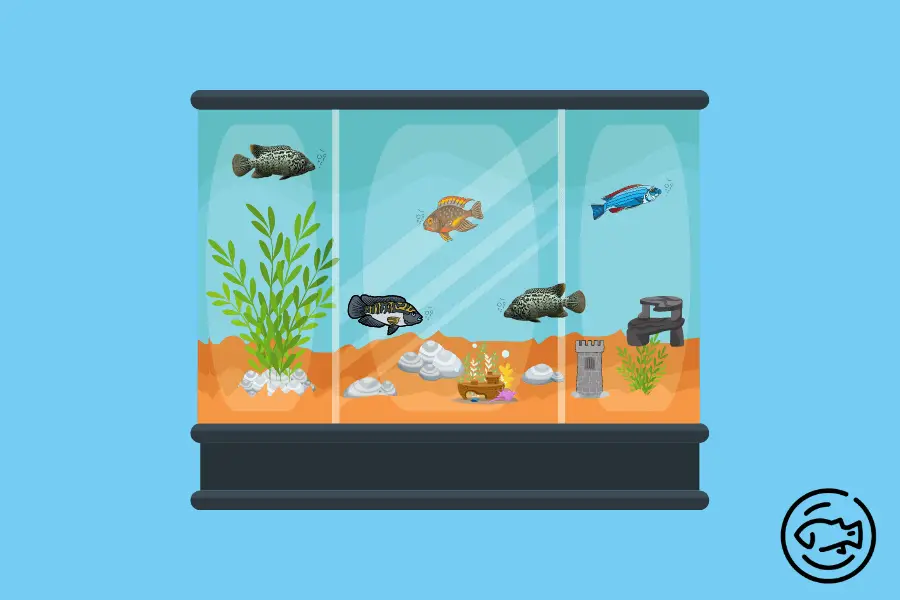
The tank should be extensive enough to house numerous fish and serve as their playground. Provide plenty of very hardy plants, rocks, caves, and hiding places.
They will spend most of their day exploring this space, and when not eating, you will find them constantly moving around the tank (hunting for food or just moving to the best location for hunting).
Aquariums with larger, more spacious setups are better.
A spacious 100+ gallon tank can typically house a single specimen, although 180+ gallon tanks are ideal for multiple fish or a pair/trio.
The perfect environment for your fish should mimic their natural habitat as closely as possible, providing them with cover and plenty of space to swim and stay active.
Aquarium Decorations

Cuban Cichlids are known for jumping out of the water during the day. To prevent this, use an external filter or add an air pump to create a current and circulate the water.
The aquarium should be decorated as closely as possible to the natural habitats of the Cuban Cichlid. Driftwood, caves, and lots of hiding places will be essential.
They will spend most of their day exploring these areas, and the open water areas should be large enough to accommodate them. Keep in mind that they are surface-dwelling fish, so a filter is mandatory for the cleanliness of your tank.
Breeding

Cuban Cichlids are egg-layer fish (50-400). It takes about two months to start breeding, and the eggs are fertilized externally.
The male and female fish will start building a nest within the tank while decorating it with hiding places, nooks, and crannies.
The nest will be built of rubble and other materials from the tank’s surroundings.
During this time, they will remain hidden in the bottom of the aquarium when feeding. The nest will become more intricate as the eggs start to develop.
The males and females will form territories to protect their territory from other males but do not fight. After the eggs hatch, they will be removed into a separate tank while still in their yolk sacs.
Cuban Cichlid pair bonding may continue well after breeding stops.
Shyness with aquarium mates is common among females, so she may not want to reveal her eggs for another cichlid to feed on.
The male Cichlid may become aggressive toward the female and devour her eggs, young fish or fry.
You should remove the female when she is done laying her eggs because she will also be safe from aggression from other fish.
Social Behaviors
Cuban Cichlids are extremely territorial fish and live alone in the wild. They will fight with other intruders (fish and other animals) if they feel their territory has been threatened.
Ensure you provide enough space to house multiple fish or keep them in separate tanks to avoid aggression. If you keep them in the same tank, ensure they have enough room to move around and are fed by different holes in the aquarium.
Cuban Cichlids can be kept in groups of up to three or even four specimens, although this is not common.
They can thrive in groups, but Cuban Cichlid care must be taken so that each fish has sufficient space for living and feeding.
Diseases
Cuban Cichlids are susceptible to diseases and are generally easier to keep than other large Central American cichlids. They should be treated with routine water care and should not be kept in a tank that does not have adequate filtration.
They are surface-dwelling fish, so they require no substrate (as they dig holes quickly). Instead, sand or very fine gravel substrate will allow them to explore.
Quarantine is highly recommended when introducing new fish to your tank to keep them and your other fish healthy.
Diseases that seem to develop efficiently in cichlids are Ick and velvet; both are bacterial infections. To prevent these illnesses, keep a clean environment and frequently change the water.
To treat the affected fish, administer an antibiotic alongside an anti-parasite treatment such as metronidazole or levamisole. Add the medication to the water at a rate of one tablet per gallon or according to the instructions on the packaging.
Conclusion
Cuban Cichlids are beautiful, colorful fish that any hobbyist will enjoy.
Their unique, caring, and entertaining behavior make them a popular addition.
While not beginner-friendly due to their aggressive behavior and need for a large aquarium, they will provide entertainment for any aquarist.
They are an excellent fish for those who want to bring large Central American cichlids into their home but cannot keep larger specimens such as the Oscars. This species is an exciting addition and is sure to provide entertainment.



